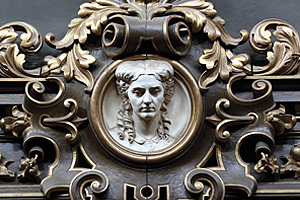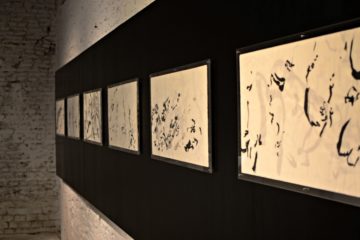
A GLASS OF CHAMPAGNE AT THE PALACE
Șuțu Palace, home to the Museum of Bucharest, is one of the most elegant buildings of the Capital. For expat communities or tourists it symbolizes a real hub – artistical, historical, cultural – all the more reason to understand the specifics and spiritual evolution of this country.
When touching on a subject like the art of living, one cannot overlook Bucharest’s Șuțu Palace, where the past, present and future collide. With an enchanting history, the palace now hosts an ample collection of furniture and valuables, while standing as an influential symbol of period architecture. Nowadays the palace frequently accommodates numerous cultural events, displays, concerts, book launching events and art auctions.
Whether by chance or design, the Șuțu Palace appears an impressive building, and continues to be so today as it approaches the respectable age of 180. Throughout its history, it was not just a family residence.
During the First World War, it had become the residence of General Tülff von Tscheppe und Weidenbach, the governor of the occupied territory. From 1928, the palace was the site of the Bucharest Municipality’s City Hall, which, in turn, became the headquarters of the Chrissovelony Bank (one of the most powerful financial institutions in Romania before the Wall Street Crash). It then had following stints as the headquarters of the CEC Bank (a state owned bank) and the Civil Engineering Institute.
Following that, on January 1st, 1959, it became the home of the Bucharest Municipality’s History Museum. The museum’s patrimony is quite an impressive one – a cultural heritage of great importance to the Romanian national identity in the context of today’s globalization; that certain something that makes us special and unique.
For historians, this is the place with a valuable collection of Neolithic items, both ritual and mundane. For architects and designers, it stands as an extraordinary opportunity to study and draw inspiration from perfectly preserved styles and movements.
The collection of the museum includes a number of desk clocks, pocket watches, wall clocks and music boxes. In the foyer, the clock ordered in 1864 from Collin, a Parisian firm, and built to specifications has mirrored digits on its face that can be read even from its reflection in an enormous piece at the other end of the staircase where it is found, a fancy trick that can be admired even today.
Here we can also find the grandfather clock ordered from Vienna by the notorious Tunusli family and brought to Romania by Tudor Vladimirescu, the pocket watch that used to belong to Alexandru Ioan Cuza, the Ghica family’s Delft porcelain fireplace ornament, and a number of more recent clocks, dating from the Communist period and inscribed with slogans in the spirit of those times.
Zilele Bucureștiului (a kind of anniversary celebration of the town), a fair that features handmade items and antiques, as well as the White Night Festival are just a few of the events constantly hosted at the palace. As culture, civilization and habits have changed and evolved over time, and the Șuțu Palace has adapted accordingly, managing to keep up with the times and match its rhythm, and best illustrating the art of living of a magnificent town with a powerful character.









